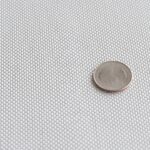Replacing your exterior door molding is a fantastic way to boost your home’s curb appeal and protect it from the elements. This comprehensive guide provides a step-by-step process for removing old trim and installing new PVC door molding, ensuring a polished and weather-resistant finish.
This project offers significant benefits, transforming a drab entrance into a welcoming focal point. Whether you’re aiming for a modern or classic look, replacing your door molding is a DIY project that can significantly enhance your home’s exterior. Let’s get started!
Benefits of Replacing Exterior Door Molding
Outdated or damaged door molding detracts from your home’s appearance and can lead to energy inefficiency and structural issues. Replacing it offers several key advantages:
- Enhanced Curb Appeal: New molding instantly modernizes your home’s exterior, creating a more inviting and stylish entrance.
- Improved Energy Efficiency: Properly installed molding seals gaps around the door, reducing drafts and lowering energy costs.
- Protection from Weather Damage: Durable, weather-resistant molding prevents water infiltration, protecting your door frame and walls from rot and damage.
- Increased Home Value: A well-maintained exterior, including updated door molding, can significantly increase your property’s value.
- Personalized Style: Choose molding styles and colors that complement your home’s architecture and reflect your personal taste.
Tools and Materials for Exterior Door Molding Replacement
Before you begin, gather the necessary tools and materials. You can find most of these at your local hardware store:
- Tools:
- Hammer
- Pry Bar
- Utility Knife
- Tape Measure
- Miter Saw
- Nail Gun
- Finish Nailer
- Level
- Mallet
- Roller
- Materials:
- PVC Trim (Pre-made head casing, square stock, small moldings for accents, fluted trim)
- Brad Nails
- Finish Nails
- PVC Plugs
- Stainless Steel Screws
- Two-Part PVC Glue
- Self-Adhesive Waterproof Membrane
- Filler Boards (wood)
Step-by-Step Guide to Replacing Exterior Door Molding
Step 1: Removing the Old Door Molding
- Carefully pry off the existing trim using a pry bar and hammer, starting with one piece at a time.
- Score stubborn aluminum flashing with a utility knife before removal.
- Remove any old wood trim behind the door.
Step 2: Preparing the Surface for New Molding
-
Measure the areas above and beside the door.
-
Cut filler boards to size and install them with a nail gun to create a level surface.
-
Apply a waterproof membrane over the filler boards, overlapping each layer for complete coverage.
-
Use a roller to ensure proper adhesion.
Step 3: Installing the Base Layer of PVC Trim
- Install flat 3/4-inch PVC stock around the door frame, starting with the top piece.
- Measure and cut each piece precisely using a miter saw.
- Attach the PVC boards using a finish nailer.
Step 4: Installing the Head Casing
- Cut the pre-made head casing to length, mitering the ends at a 45-degree angle for a professional finish.
- Center and secure the head casing above the door using stainless steel screws.
- Use a level to ensure proper alignment.
Step 5: Adding Plinth Blocks and Fluted Trim
-
Create plinth blocks by gluing two pieces of 3/4-inch PVC stock together.
-
Install the plinth blocks at the base of the door, aligned with the head casing.
-
Add filler blocks on top of the plinth blocks and install the fluted trim along the sides of the door.
Step 6: Installing Decorative Elements
- Install returns for the head casing using 45-degree miters and secure them with PVC glue.
- Add small PVC trim pieces to enhance the header and the bottom of the fluted molding.
Step 7: Finishing Touches
- Install PVC plugs in all visible screw holes using a mallet.
- Clean the area and inspect for any gaps or imperfections. Address these promptly for a seamless finish.
Maintaining Your New Exterior Door Molding
- Regularly inspect for damage and address any issues promptly.
- Clean the molding annually with a gentle pressure wash.
- Touch up paint as needed to protect the molding from the elements.
By following these steps, you can successfully replace your exterior door molding and enhance the beauty and value of your home. Enjoy your updated entryway!

